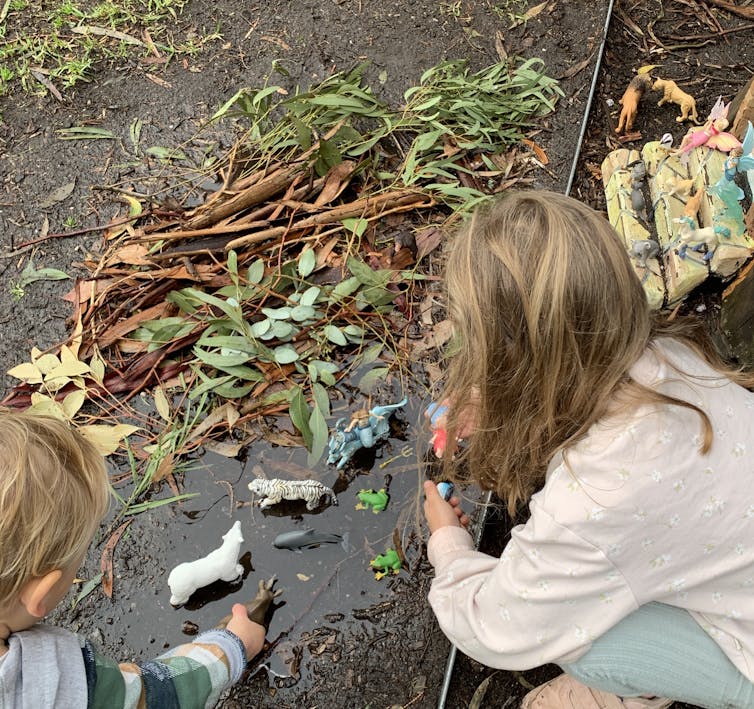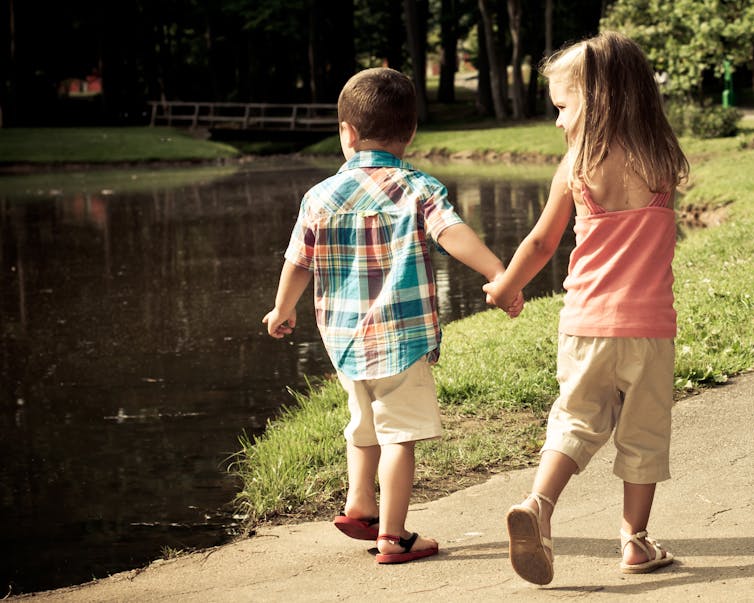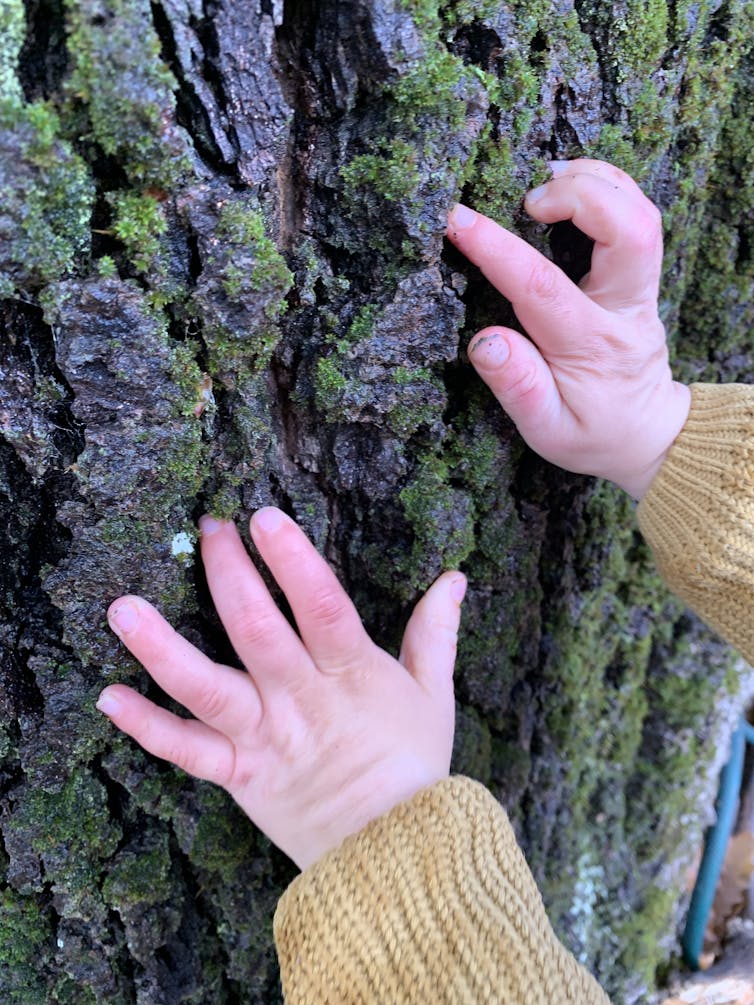How to use a trip to the playground to help your children strengthen their memory
- Written by Karen Malone, Professor, Environmental Sustainability and Childhood Studies, Swinburne University of Technology
To remember things, you need to give them your full attention.
American neuroscientist and bestselling author of Still Alice, Lisa Genova’s key findings on preventing Alzheimer’s disease show how to enhance memory to retain information. This research can be adapted to children.
Children can be supported to exercise their mind muscles. They can learn the best ways to get information efficiently into their heads and access it effectively when they need to.
In her book Remember: the science of memory and the art of forgetting Genova points out to enhance memory we don’t need to play “computer brain games” or “read books on recall strategies”, what we simply need to do is improve our skills of noticing.
She writes that “noticing requires two things: perception (seeing, hearing, smelling, feeling) and attention”.
You can use a trip to the playground to help your children strengthen memory muscles and become better learners.
This can be done by paying attention, slowing down, mind mapping, rehearsing, enhancing the senses and mixing things up up.
Getting there
Fill your child’s backpack with snacks and drinks, and small figurines such as fairies, lions, tigers, koalas, dinosaurs or favourite small cars and trucks for storytelling and mud play.
 Figurines are great for storytelling and mud play.
Karen Malone, Author provided
Figurines are great for storytelling and mud play.
Karen Malone, Author provided
Kid’s binoculars and magnifying glasses are great for noticing and spying on birds and bugs.
Pack watercolour paints, brushes and recycled paper for painting, and chalk and brown baking paper for tracing bark, leaves, rocks, hands and play equipment. Play dough is great for natural sculptures.
Then you’re on your way.
Creating a mind map
Like all animals humans use mind mapping to create maps of our immediate environment to navigate our surroundings. Our brain is wired to recall where things are located in space.
For wild animals this is critical for survival and for children, it helps them to feel safe. You can’t do mind mapping in a car – it requires walking.
Walking to the playground, run your hands across fence palings and smell rosemary twigs. Encourage your children to do this too.
 Let your kids notice the things around them to create a mind map of their journey.
Shutterstock
Let your kids notice the things around them to create a mind map of their journey.
Shutterstock
Collect eucalypt leaves, gum nuts, acorns and other natural loose objects and pop them in the bag to be used later in potions or paintings at the park.
You could make chalk drawings of rivers and fish on the pavement as a way of finding your path back home.
This pace may seem slow but to really notice, you need to slow down. A lot of neural work is happening as children construct a mind map. The more time adds detail to the memory.
Exercising the mind
Once at the park, decrease distractions by not multitasking (turning off devices). This allows space for noticing.
Let your children explore playground equipment until they are out of breath and their bodies are tired.
Now it is time to exercise their minds. Take a pause to consider the layers of the playgrounds, the earth, grasses, tree roots, ants and bugs, plants and trees, leaves, birds and the sky.
Read more: Don’t worry, your child’s early learning doesn’t stop just because they’re not in childcare
You can lie on your back with your children and all close your eyes. Quietening the mind, through mindfulness, allows children to be dreamy. Relaxing in a meditative state can lower anxiety and tension. Research on children in nature reveals it alleviates hyperactivity and depression. The mind can be “trained to become less reactive, to put the brakes on the runaway stress response”.
 Nature helps kids relax.
Karen Malone, Author provided
Nature helps kids relax.
Karen Malone, Author provided
You can now unpack the figurines. These can be used for children to tell stories adding twigs, and leaves for the stage. They could mix petals and water into magic potions.
Children often tuck away strong emotional responses to events or information until quiet moments. Reactivating the neural circuits through retelling or externalising experiences helps children forge positive memories and process conflicting emotions.
Re-enacting stories using figurines or other objects can help children revisit positive and negative experiences they have encountered.
Read more: Why make-believe play is an important part of childhood development
You can encourage your child to make fairy lands or sand pit dinosaur worlds and play out past events. In this way, children can project emotions through the objects as they play out narratives.
Positive emotions like happiness and joy actually enhance children’s recall to re-activate past positive emotions. By focusing on individual senses or emotional responses children learn to connect cues with association. This builds significant new repertoires to retrieve from later.
 Fairy worlds can help your kids re-enact previous experiences.
Karen Malone, Author provided
Fairy worlds can help your kids re-enact previous experiences.
Karen Malone, Author provided
Multi-sensory and meaningful encounters, enhance our perceptions and recall by creating multi-neural pathways. This can be done by using a range of senses: smell, touch, sound etc.
You can encourage your children to pause and smell the scents, listen to birds, run a feather through fingers, collect stones. and touch rough bark and trace it on baking paper.
Set up the pencils and paints for drawing flowers or sculptures of piled up stones.
Mix it up and revisit
Genova writes “sameness is the kiss of death to memory”. If you want children to remember more of what has happened, step out of set routines and mix things up.
Read more: Nature detectives in the backyard: 3 science activities for curious kids this summer
Go somewhere new, do something different. Look for ways to make the playground experience unusual.
You could eat food that is only green, make short digital stories, print photographs, revisit paintings, drawings and tracings, mark your journey on a map, then retell and reactivate children’s experiences as they drift to sleep.
Authors: Karen Malone, Professor, Environmental Sustainability and Childhood Studies, Swinburne University of Technology





